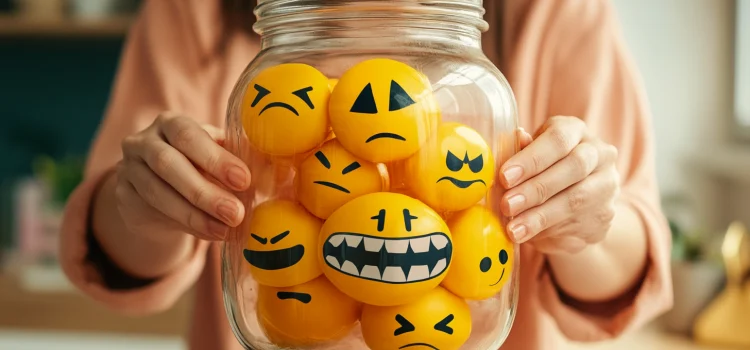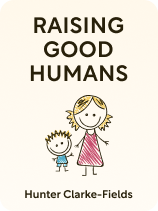

This article is an excerpt from the Shortform book guide to "Raising Good Humans" by Hunter Clark-Fields. Shortform has the world's best summaries and analyses of books you should be reading.
Like this article? Sign up for a free trial here.
Are you overwhelmed as a parent? What are key strategies for emotional regulation for parents?
It can be hard to get your point across to your kids when you’re angry and stressed. No matter how hard the job can be, you need to regulate your own emotions to set an example for your children.
Here’s how parents can use mindfulness to regulate themselves in times of stress.
Use Mindfulness to Self-Regulate
It’s harder to navigate conflict with kids when you’re angry, frustrated, stressed, or overstimulated—in short, when you have an elevated stress response. Moments of high stress trigger your brain to go into fight or flight mode rather than problem-solving mode. This means when you’re stressed, you’re more likely to react impulsively instead of intentionally.
| The Science Behind Your Fight-or-Flight Response The fight or flight response is your body’s primal, automatic reaction to a perceived danger or threat. When you perceive a threat, even if your life isn’t actually in danger, your autonomic nervous system kicks into gear, releasing adrenaline and other stress hormones like cortisol into your bloodstream. These hormones prepare your body to either confront the threat head-on (fight) or flee to safety (flight). While the fight-or-flight response evolved to protect us from immediate physical threats, it doesn’t always serve us well in modern contexts. It triggers physiological reactions like an increased heart rate and adrenaline release, which may be unnecessary or harmful in non-life-threatening situations such as work stress, potentially leading to chronic health issues and impaired decision-making. Understanding the science behind the fight-or-flight response reveals how deeply our physiological reactions to stress are embedded in our biology. Recognizing when this response is happening can help you find more constructive ways to manage stress and conflict. |
Hunter Clarke-Fields encourages a personal mindfulness practice as emotion regulation for parents to help regulate their emotions in moments of high stress. She argues that a mindfulness practice will help reduce your reactivity as you begin to build a habit of staying present. Over time, you’ll become more aware of your thoughts and feelings.
| The Effect of Mindfulness on the Brain Clarke-Fields’s suggestion to develop a mindfulness practice is supported by neuroscience research, which shows that regular mindfulness exercises can physically change the structure of the brain. Areas like the prefrontal cortex—associated with higher-order brain functions such as awareness, concentration, and decision-making—become more active. Additionally, the amygdala, which deals with stress and fear responses, shows decreased activity. Therefore, by adopting a consistent mindfulness routine as Clarke-Fields recommends, you’re not just better at managing your in-the-moment reactions; you’re also engaging in a form of mental training that enhances your overall emotional resilience and cognitive control. This makes it easier to remain calm and focused during stressful parenting moments. |
Clarke-Fields offers three ways to weave mindfulness into your daily life:
1. Start a meditation routine. She recommends dedicating some time each day (5-10 minutes) to a formal meditation practice.
2. Practice mindfulness during everyday tasks. Clarke-Fields recommends picking an ordinary task like brushing your teeth or washing dishes. Try to concentrate fully on what you’re doing—the sensations, motions—and nothing else.
3. Pay attention to your body. Throughout the day, take time to pause and notice any tension or discomfort in your body. When you have intense emotions, where do they sit in your body? For example, do you feel anxiety in your throat or your belly? Does anger stay in your jaw? Pay attention to what happens in your body as feelings arise and dissipate.
(Shortform note: If you’re still feeling lost about how to incorporate a mindfulness practice into your daily routine, Jon Kabat-Zinn recommends starting with the breath. In Wherever You Go, There You Are, Kabat-Zinn explains that whether you’re practicing mindfulness in your daily life or doing a more structured meditation practice, your breath is an invaluable tool; it provides you with something to draw your attention back to when your mind wanders. Wherever you are and whatever you’re doing, you can breathe naturally, paying attention to what it feels like to have your breath move in and out of your body.)

———End of Preview———
Like what you just read? Read the rest of the world's best book summary and analysis of Hunter Clark-Fields's "Raising Good Humans" at Shortform.
Here's what you'll find in our full Raising Good Humans summary:
- How to use mindfulness to manage emotions—both yours and your child's
- Four steps to resolving conflicts with your child
- Practical strategies for creating a simple, low-stress environment at home






